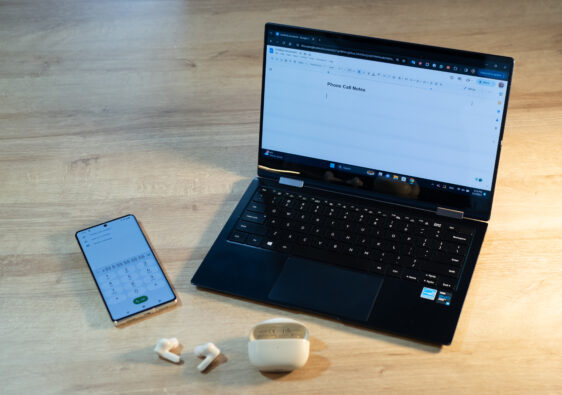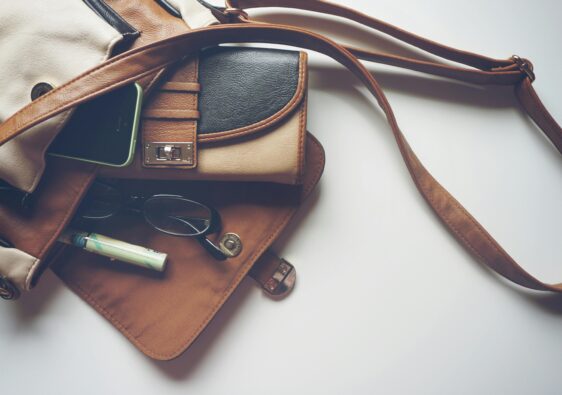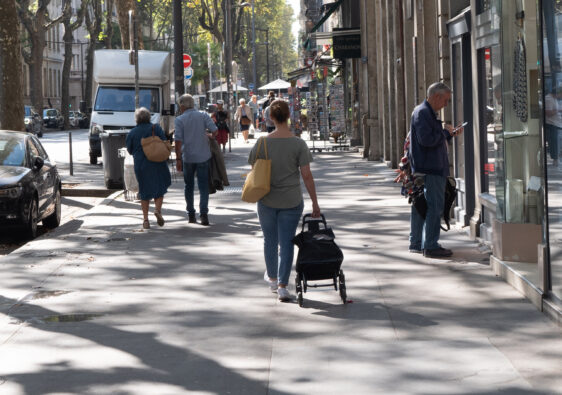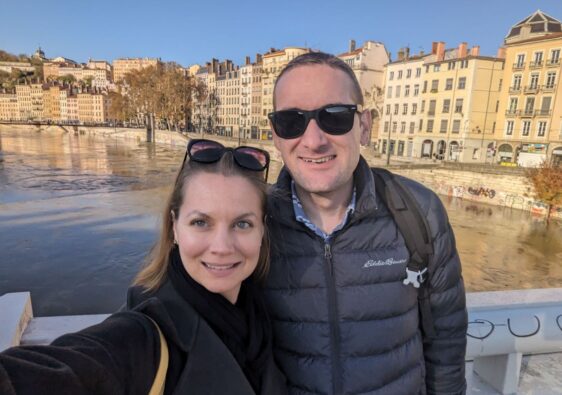There were many things I expected to like about France. The fantastic food and wine, the rich history and culture, the beautiful and diverse landscapes, the list can seem endless.
However, I didn’t move to France completely blinded by my love of the country. I did my research and I had traveled there enough to know that not everything would be perfect, there would be some trade-offs of leaving a comfortable and familiar way of life in the United States for one in France.
But to my surprise, some of the things that I mentally braced myself to deal with actually turned out to be not that bad, or even something that I found myself preferring over what we did back in the US.
Here’s a list of 9 things, ranging from small to big, that I assumed I wouldn’t like but in actuality was pleasantly surprised by.
Square (or Euro-style) Pillows
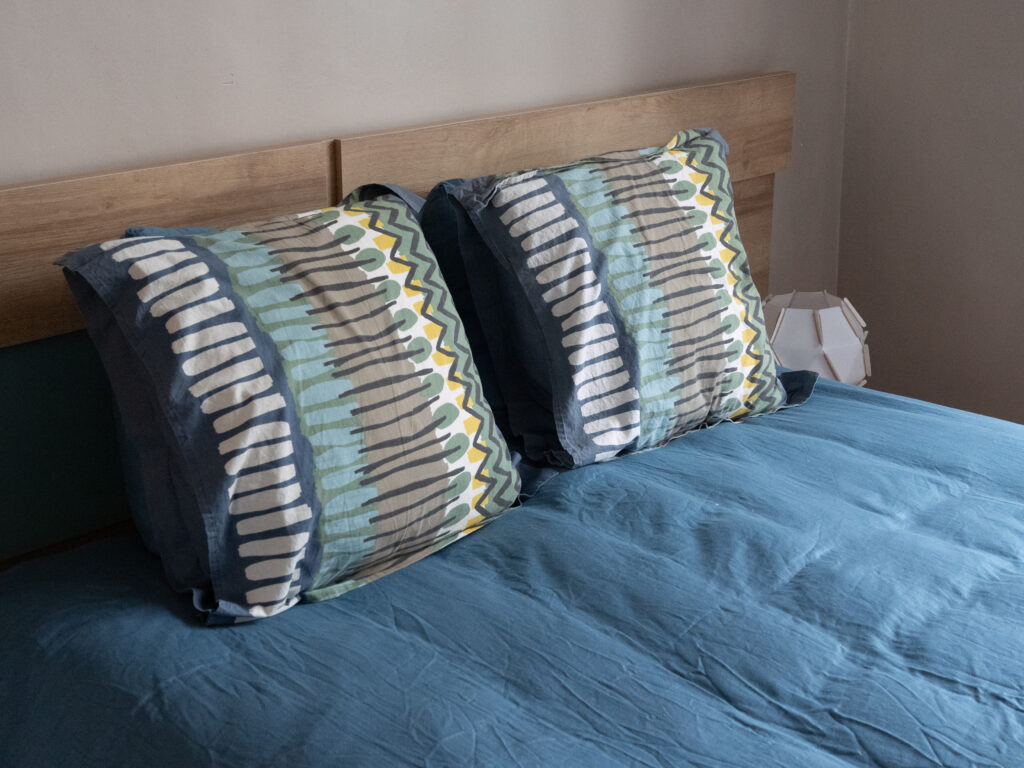
In the US we sleep on rectangular-shaped pillows and even in Europe at many of the international hotel chains this is the standard. But if you stay at a European brand hotel, a local Airbnb, or go shopping for a pillow in France they’ll likely be what we call a Euro-style, or square-shaped pillow.
I first really came into contact with this when we went to Ikea to shop for our pillows right after we moved to France. The overwhelming majority of pillows available were the square-shaped ones, there were just a few of the rectangular-shaped ones offered, and if I wanted one that had the right level of support and fluffiness that I wanted, it had to be the euro style one. So I bought one, a bit begrudgingly, with the idea that I would replace it later with a “normal” one.
But the weird thing was that after a few nights, I actually grew to like it. When I sleep I usually like to have my arms folded up near my head. With a rectangular pillow, I always had to decide whether to tuck my arms under or on top of my pillow. Either way messed up the level of fluff of my pillow, either pushing it up into my face or pulling it away if I rested my hands on the pillow. But with the square pillow that’s not a problem because my hands and arms are tucked around the pillow and rest on the mattress, not the pillow itself.
It seems like a small thing, and it is I guess, but I knew I had converted to the square pillow when we were away on vacation and our vacation rental proudly offered down-filled rectangular pillows. Instead of being excited about them, I was disappointed and by the end of the trip, I was ready to get back to my square pillow.
No Top Sheet
Continuing with the bedding theme, another thing that’s different in France is the lack of a top sheet on a bed. Instead, you have your fitted sheet on the mattress, a pillow case, and a duvet with a duvet cover. There is no top, or flat, sheet in between the duvet and your body.
Back in the US, my weekly laundry routine for our bed consisted of changing my fitted sheet, flat sheet, and pillowcase for fresh ones. I would only wash my duvet cover maybe once a month in an ideal world. In all honestly I probably went way longer and only washed it when I spilled coffee on it. Yikes.
So what about in France? If you don’t have a top sheet, doesn’t your duvet cover get grimy? Yes, it does. So what do you do? You wash your cover once a week with your other bed linens.
Once I realized this, it completely changed my mindset and I love it. Instead of thinking that my top sheet is supposedly protecting my duvet cover from dirt and grime (it isn’t), I wash all of the bed linens that have contact with my body every week and it feels so much cleaner! And to make changing your linens easier and quicker just buy a spare duvet set so you don’t have to wait on your tiny European washer/dryer combo (if you’re lucky to have one) to partially dry your bed linens to slightly damp (learning the ways of the finicky washer/dryer combos here is akin to learning alchemy and each one is unique, but that’s a subject for another post.).
Pay Toilets
Europe is known for its scarcity of free public toilets. Unlike in the US, you can’t just duck into for example a pharmacy or supermarket to find a free toilet to use. Adding insult to injury, when you do find big spacious toilets in a public space, like a train station or shopping mall, you have to pay to use them! How dare they!
I too used to feel incensed about having to hand over a euro for the privilege to use a toilet, but now I don’t mind it. Why?
Generally speaking (of course, there are exceptions) paid toilets that are staffed are clean and well stocked. You’re paying to use a toilet that isn’t being vandalized or abused, always has toilet paper, and has an attendant on-site to keep things clean. If I have the choice between using a scary-looking free toilet (and those rarely exist) versus a pay toilet that has an attendant, I’ll go with the pay one.
Having to Talk with a Pharmacist to Get Any Medication (including over-the-counter)
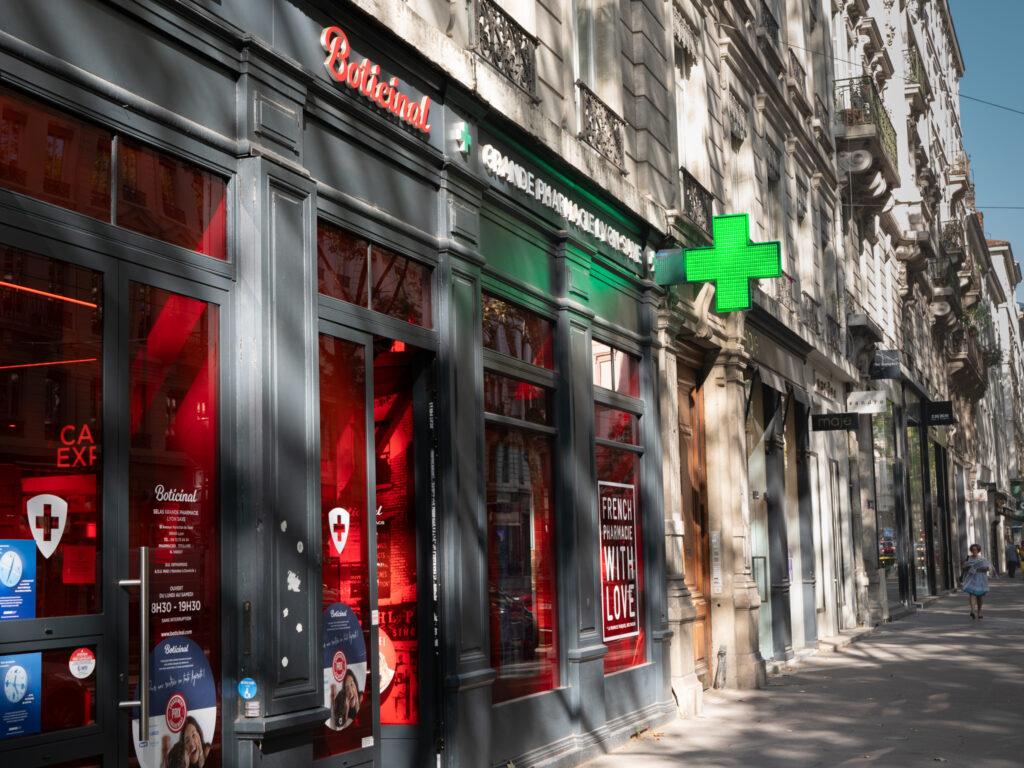
I really didn’t think I was going to like this when I moved to France. Unlike in the US, where I could pick up a mega bottle of Advil (which doesn’t exist in France, see the next point) while doing my grocery shopping when you want any sort of medication in France, including nonprescription ones, you need to go up to counter at the pharmacy and ask for it. What a pain! Having to talk to someone just to get over-the-counter medication! Or is it?
I realized I didn’t mind this after I got my first cold after our move. Medications vary from country to country, and what I would use to treat my cold symptoms in the US may have a different name or not even exist in France. If I was left to my own devices, I would just be starting at a row of boxes wondering what exactly I should take and hoping that my Google skills were enough to make the right choice.
But instead, I can just throw myself on the mercy of a knowledgeable pharmacist to help me out. I actually enjoy just saying “I’m sick with a cold, I need something to help me out. What can you recommend?” Then they start making recommendations and ask questions like if I have a fever or not, and by the time I walk out with my medication, I know that it was hand-selected for my situation.
And of course, if you already know what you want (like Advil for example) you can always go up and ask directly for the medicine and they’ll give it to you. But it is nice if you’re dealing with an illness and you don’t know exactly what to take for it you can avail yourself of a knowledgeable pharmacist (and they all are certified at French pharmacies) to make a recommendation.
Smaller Product Sizes
Being from the US I’m used to going to a grocery store and having a variety of product sizes to choose from. For example, shampoo might come in a medium-sized bottle, then for a little bit more money I can buy a “family” or “value” sized bottle, and then if I go to Costco I can get a huge bottle of shampoo with a pump that will last me six months or longer.
When I moved to France, I noticed that ultra-large product sizes were not standard. What we (Americans) would consider a regular bottle of shampoo for example was as large as they got. Packages of tampons and feminine pads only lasted a month or two. Sunscreen and face cream came in dainty little sizes. Cold and allergy medications were in small boxes that lasted around a week.
At first, I was a little miffed by this. I was used to buying most of my cosmetics and medicines in bulk so I wouldn’t have to think about them for half a year or more. But then with time, I came to appreciate these smaller product sizes. Why?
One thing I noticed with my old bulk-buying habit days was that often I never actually finished the bulk-sized product before it expired and I would have to toss it. Also, my husband and I have always had a somewhat nomadic existence and we often moved every year or so, and while packing for those moves I often found myself jettisoning the majority of the bulk products I had bought since it wasn’t worth bringing a half full “mega” bottle of shampoo.
Another benefit of these smaller product sizes is the chance to change products more quickly. I’ve often tried a new shampoo or cream and then realized I didn’t like it but because I had bought a bulk size I was either going to be stuck with it for a long time or I could toss it and then feel guilty about the money I wasted.
Finally, smaller product sizes just make sense in Europe where living spaces are much smaller and you don’t have the abundant storage space that comes with the typical McMansion and two-car garage in the US. Even if I could buy paper towels in bulk, where would I store them in my 76 square meter apartment?
The Metric System
Yes, I know the rest of the world is saying “Of course the metric system is better” in their heads, but being from the US I was raised on the admittedly illogical and medieval Imperial system of measurements. But with our move to France, I finally came to grips with the fact that I’d have to begin using the metric system. My weather app was switched to Celsius and my food scales switched over to grams and milliliters.
And you know what? It’s better! I’m still honing my “feel” for the metric system but it’s so amazingly logical and simple to base a measurement system on a unit of measurement that is divided and multiplied by ten, 100, and 1,000.
For example, I’m a health-conscious person and sometimes I like to measure out my portion servings. All food labels in France give their nutritional stats based on a portion of 100 grams. Let’s say I measure out 48 grams of potato chips. If I want to know the nutritional value of that portion I just divide the nutritional values given by 100 and then multiply that result by 48. Simple! No longer do I have to wonder what a half-cup serving that is the recommended serving size scales up to if I poured myself a ⅔ cup serving of chips.
The only hiccup in the system so far that I’ve found is that I still feel for measuring temperature that Fahrenheit is a more precise system. But you can’t beat the simplicity of Celsius with 0 being the freezing point and 100 being the boiling point of water. And if you want more precision you can always use half degrees with Celsius.
In-person shopping
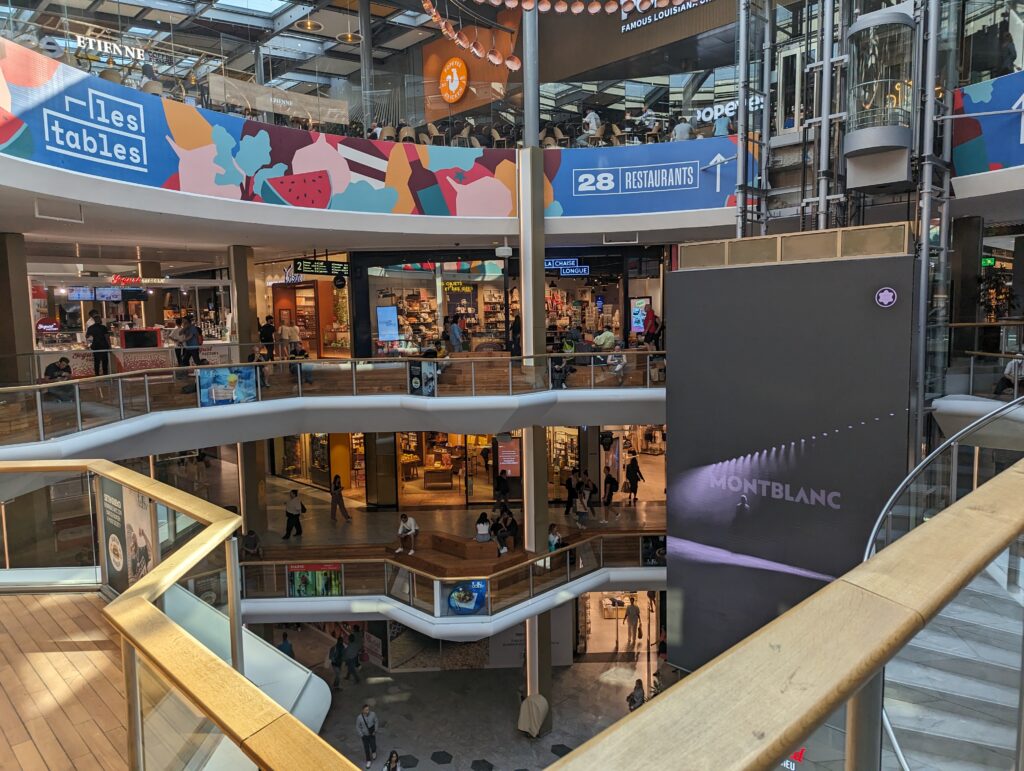
The shopping mall is dead, or so they proclaim in the US. And it’s true that usually shopping in a mall in the US is a lonely and sad experience. But when you go to a mall in France the experience is entirely different.
Gone are the lonely corridors and empty storefronts. The malls in France are packed and alive! Why? The reasons are many and complex. One is the walking culture in Europe versus the car-centric mentality of the United States. It’s not convenient to hop from store to store so having all of them in one place is more accessible. Second while online shopping and Amazon Prime are definitely a thing here, getting deliveries isn’t as easy as in the US (I’m going to write a future post about all of the delightful struggles we’ve encountered with deliveries). So sometimes it’s just easier to go in person to buy something instead of ordering it online.
I am firmly in the camp of online shopping, if I never had to go out to do my shopping I would, but I have been won over at times by shopping in person in Europe.
Since ordering online is a more complex affair, especially if you have to make a return, sometimes just going in person and trying on an article of clothing is a much easier affair. Especially if you can easily hop on a bus or tram to take you to a shopping center, instead of getting loaded up in a car and circling a parking lot for what seems like hours looking for a prime parking spot.
Also because the malls in France are busy and thriving it’s a much more pleasant experience. When my husband and I go to do some shopping at one of the largest malls in Lyon, we usually make it a half-day excursion and go get lunch at one of the many excellent restaurants in between the shops we visit. It’s not an experience I dread but a fun one.
Plus if you want to benefit from the famous soldes (state-mandated sales that happen twice a year) you have to go in person for the best deals.
So while we do have Amazon Prime and use it weekly, I have definitely learned that sometimes shopping in person is a good thing.
No screens in windows
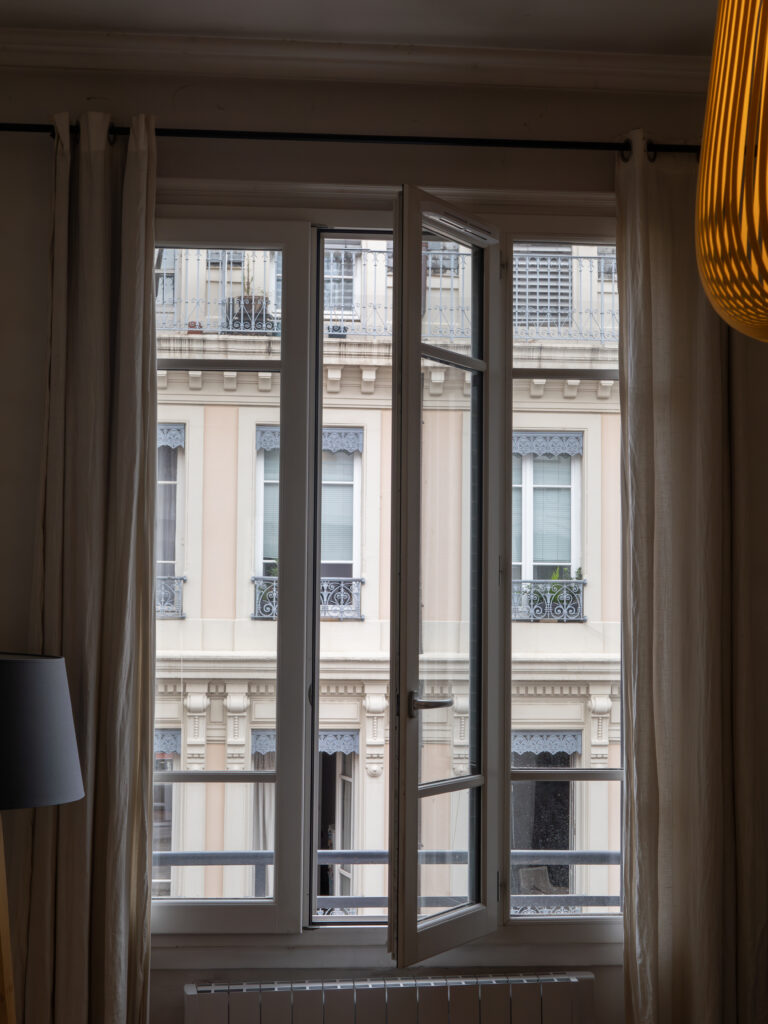
This is a small detail but you’ll notice that almost all of the windows in France don’t have screens when you open them. This might not seem like a big deal except that most buildings don’t have air conditioning (see next point) so you’ll be opening your windows a lot throughout the year.
But don’t bugs and mosquitos get in without screens? Yes, sometimes they do, and honestly, that’s not great. However, you could get some citronella candles and a fly swatter if they become too much of a nuisance. Since we live on the fifth floor (fourth in France) we don’t get too many bugs flying in, and they usually just fly back out.
But bugs aside I’ve learned I actually like not having screens. Why? I feel so much more connected to the outdoors without them. I can spend the whole day in my apartment but still feel connected to nature with my windows open. Our apartment doesn’t have a terrace or balcony but I find I don’t mind the lack of outdoor space since I can just open my windows to let the outdoors in.
And it’s fun! I get so much free entertainment leaning out of my window to watch the street below me. The cars honking, the occasional protests, the neighborhood arguments, the drunks late at night singing in the street, all of it I can watch leaning out of my window sill.
Minimal Air Conditioning
Okay, I saved the biggest surprise for the last.
I’m from Texas, the land of multiple days over 100 degrees (40 Celsius), and having air conditioning is viewed as an absolute essential and divine right. I’ve had central heat and air my entire life and the few times it broke was an absolute crisis, like so bad we got a hotel to stay in rather than go without it.
So when I learned that the vast majority of residential buildings in Europe do not have central air I was worried, very, very worried. I knew that generally, the summers in France would be milder than the ones I experienced growing up in Texas but still, there would be heatwaves from time to time.
Thankfully portable air conditioning units are available, and while they’re not super efficient they do work and make things bearable on the hottest of days. When we moved into our apartment in Lyon one of our first purchases we bought was a portable A/C unit. It was April and the deliveryman thought we were crazy for buying one at that time of year, but I was freaked out about the summer to come and wanted to be prepared.
However, I found something weird happened. I didn’t use my air conditioning nearly as much as I expected to and I, gasp!, liked that. Why?
As we went through the warmer spring months of May and June and still didn’t turn on the a/c, instead just relying on fans to move the air, I realized that I was adapting slowly to the warmer temperatures. Instead of turning on the air the minute the temperatures reached 72 (22 Celsius) degrees, I just switched on a fan.
It started to become a game we played, How long could we go without turning on the A/C? We made it through May without using it once and just a few times in June as the heat started to crank up. We learned that generally, we could go without air conditioning until it reached between 84 to 86 degrees (30 Celsius) in our apartment.
This was major. My former American self would never have been able to endure temperature like that with just a fan, but now I was. And I found it had several benefits.
First many residences and stores in France have no air conditioning at all, and obviously, when you don’t own a car and are getting around just walking or taking public transport you’ll be exposed to the elements. However, I noticed that since I was using our air conditioning sparingly, I was much more comfortable in those situations. Walking outside or going into a warm building didn’t cause me to sweat profusely or feel miserable right away. Over the months I noticed that what I considered to be a cool to comfortable temperature gradually rose to around 77 degrees (25 Celsius) or so. So tapping into my body’s own ability to adapt was a major benefit.
Another one was the cost savings. In the US our electricity bills in summer were very high since I loved to keep our place at a frigid temperature. But now with moderate use of our portable A/C and more reliance on fans and open windows, our utility bill has gone down.
And finally, it is nice to feel more eco-friendly. I like to do what I reasonably can to help conserve our planet’s limited resources and my extreme reliance on air conditioning in the US did bother me at times. I used to justify my use of A/C with the argument that since I hardly used heat in the winter it balanced out my electricity use. Now however I can confidently say I’ve dramatically reduced my electricity use in the summer as well and I feel good about that.
Conclusion
So there you have it! 9 things that I was prepared to dislike or just grin and bear with my move to France, but instead I was pleasantly surprised by them and even grew to like them.
Things like this just show how beneficial it can be to get out of our little bubble, our comfort zone, sometimes and try life from a different perspective. You don’t have to do something so dramatic as moving to another country, even a small change in your normal routine and habits can prove to be refreshingly eye-opening.
Vive la différence!

